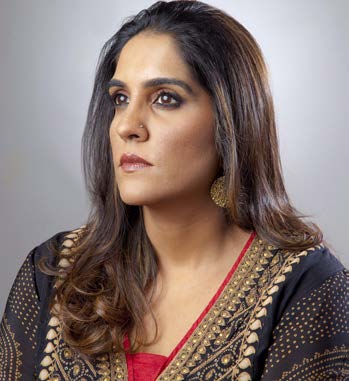Dermatologist
LASER HAIR REMOVAL

Dr Mukta Sachdev Head of the Department of Dermatology Manipal Hospital, Bengaluru, India Medical Director, MS SKIN centre 26 years in practice
Dr Mukta Sachdev is one of the leading practicing MD dermatologists, studied and trained extensively in India and abroad. With two decades of clinical experience in medical, aesthetic and cosmetic dermatology, she has extensive experience in lasers and devices.
Know more from Dr Sachdev about laser hair removal.
Who is a good candidate for Laser Hair Removal?
The ideal candidate is a person with fairer skin and thicker dark hair. In the Indian scenario, this is not always the case as patients have darker skins.Also, female patients with hormonal disturbances or PCOS tend to have thicker darker hair and they respond well to laser hair reduction. It is advisable to investigate female patients with suspected PCOS or hormonal imbalance to detect the underlying cause and also to advise hormonal medications or endocrinological management concomitantly for best results.
How can best results be derived from this treatment, and tell us about the technique.
Laser hair reduction is best achieved by performing sessions every two to four weeks depending on the hair growth.The average number may vary from 8-12 sessions for optimum results.This result is further sustained by performing maintenance sessions two to four times per year thereafter for long-term benefit.
The devices used may include long pulsed Nd YAG lasers, diode lasers and IPL devices and the machine must ideally have in-built cooling to reduce any risk of complications. Prior to the treatment, the area is shaved and a cooling gel is applied. It is important to be aware of the risks in darker skins and correct management of patients. Even today, in our centre, we are still seeing patients coming in from other places with burns and complications from laser hair removal treatments which are avoidable. Depending on the site, skin type, body area and hair type, we select the device which we find to be most suitable and effective for the individual patient.
What is the recovery time for a patient who undergoes this treatment?
There is minimal downtime and post treatment care may involve the use of a topical antibiotic cream and soothing emollient creams or lotions depending on the treated. It is mandatory to use a broad spectrum sunscreen two to three times per day on a regular basis.
Any contraindications involved or is there anything the patient must not do after the treatment?
Laser hair reduction should not be performed in patients who are pregnant or breastfeeding. Caution in patients who have any active infection, active eczema or inflamed skin and a tendency to keloid scarring.The patient ideally should not scrub or abrade the skin and no other treatments can be carried out on the lasered area for two weeks post treatment. Between the laser sessions, only shaving is permitted and the patient must not wax or adopt to other depilatory methods.
One challenging case study that you have dealt with for this treatment.
Years ago,a female patient had consulted me for excessively thick hair and she used to shave daily to maintain it. She was extremely distressed and covered her face with a scarf. On starting the treatment, I assured her that at some point, she would discard the razors, but she was sceptical. Sure enough, with complete investigations and hormonal management along with repeated seasons of laser treatment, her hair growth significantly reduced and she went on to pursue a beauticians course. It was wonderful to see her confidence level and dramatic personality change and she still performs her maintenance sessions. We have now recommended a home use laser device to maintain the beneficial effect of the in-office laser hair reduction treatment.